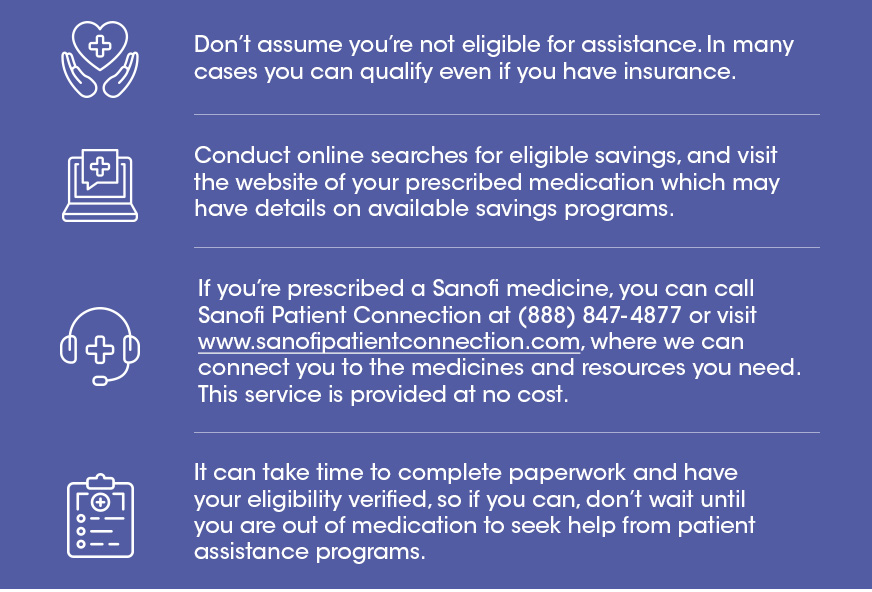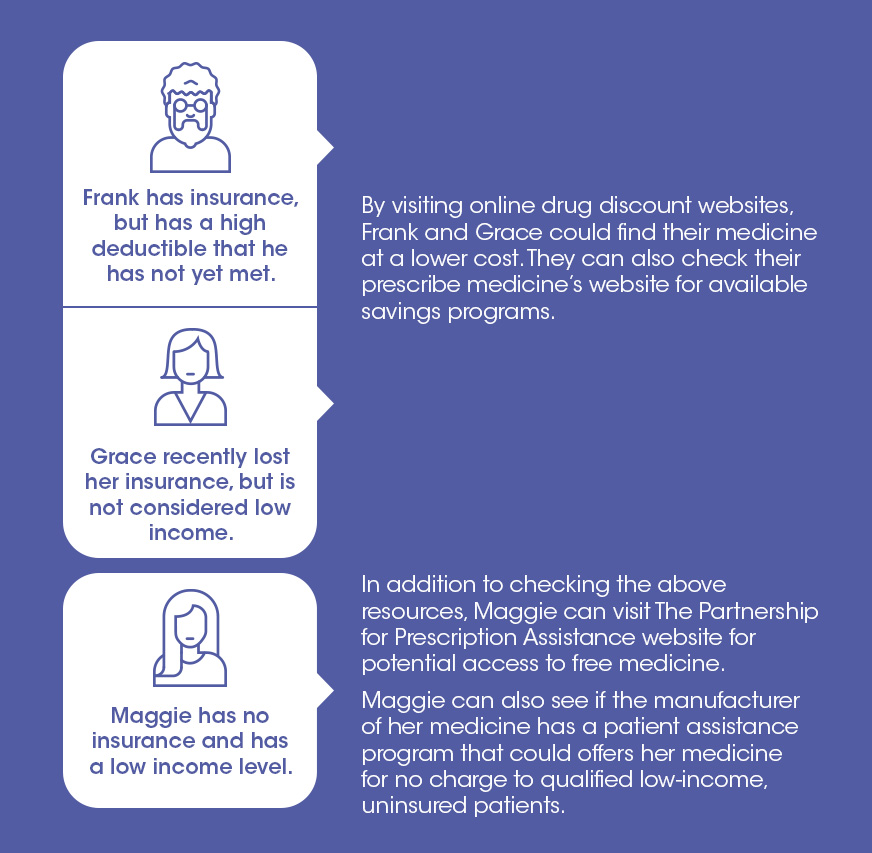
If you find yourself spending more on health care than ever, you’re not alone. According to US government figures, out of pocket costs for many Americans rose 3.9% in 2016 — the fastest rate in a decade — and are expected to rise by 4% in 2018 and 4.9% in 2019. Americans under the age of 65 who were insured through their employer spent more than ever on health care, and spending grew faster in 2016 than in recent years.
If you’re managing a chronic condition like diabetes, cardiovascular disease, or multiple sclerosis, being unable to afford your medication can leave you feeling completely helpless.
For some patients, the problem is a lack of health insurance or a sudden gap in coverage that may come with a job change. Other patients may have been vigilant in choosing an affordable policy that covered the medicines they need, only to find that coverage was changed or eliminated the next year.
Higher deductibles, higher prescription copays, and even limits on what drugs are covered; all can take their toll on affordability. While pharmaceutical companies try to offset this with rebates to insurance companies and pharmacy benefit managers, those potentially money-saving discounts may not be passed on to patients. All of this means that there are both patients who continuously face the challenge of not being able to afford their medicines, or who unexpectedly can no longer pay for their treatments.
If you’re someone who needs help paying for your medicine, it’s important to know that there are programs that can help lower or even eliminate the cost of your medicines. Affordability programs come in a few varieties. Some cover a wide range of prescription drugs; others are specific to a condition like diabetes.
Instead of taking dangerous steps to save money such as splitting pills or skipping doses, these programs can allow you to access medicines as prescribed by your health care provider. In many cases you can qualify even if you have commercial insurance.

Some online companies allow you to save on many prescription drugs by buying online and then picking up drugs at a local pharmacy; even if you have insurance. Other online companies enable you to comparison shop, and will compare prices on the medicines you want, and can send you savings coupons or direct you to savings programs from manufacturers.
For people with no prescription drug coverage, organizations such as The Partnership for Prescription Assistance helps find you needed medicines at very low or no cost. Patients also can check if the pharmaceutical company that makes their medicine also has a financial patient assistance program for that drug. Many such programs are available for chronic conditions such as diabetes, when patients are having trouble affording daily medications like insulin and even supplies like test strips. These programs can sometimes offer eligible patients their prescribed medicine for little to no cost.
Sanofi offers several patient support programs, many through the company’s Patient Connection website:

In addition to the programs listed here, you can find others that may fit your situation by doing an online search for eligible savings. Make sure to visit the website of each company that makes your prescribed medication, and search there for available savings, financial assistance or patient assistance programs. You also should check the websites for reputable patient support and advocacy organizations for your condition, as they often have resources there on how to keep your costs in check. Finally, don’t give up, and don’t assume you’re not eligible for assistance.
* The inclusion of links or mention of any third party organization does not imply Sanofi’s endorsement or support.